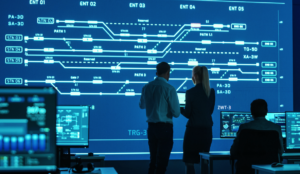Solve ICS Security Issues with ICS and IT Team Convergence
It’s predicted that threat actors will weaponise industrial control systems to harm or kill humans by 2025. Prepare by learning how to balance ICS and security convergence.
Industrial control systems refer to a broad class of automation systems that include programmable logic controllers, safety instrumented systems, distributed control systems, human-machine interfaces and SCADA systems. These systems are vital to critical infrastructure because they control and monitor manufacturing and industrial processes — without which societies, countries and economies would fail.
Historically, ICSes had a high degree of physical separation from IT infrastructure. Changes in business requirements and innovations in technology, however, are causing an organic convergence.
Common drivers for ICS and IT convergence
Although ICS environments were previously left isolated intentionally, they are now increasingly connecting to other networks. Seventy percent of ICS environments had an external connection in 2021, almost double from the previous year, according to research from cyber security company Dragos.
This convergence did not happen on purpose, but rather is due to a number of organic changes that came largely from the digitisation of ICS environments.
Some common drivers leading to ICS and IT convergence are the following:
- enabling remote access and maintenance for employees and third parties;
- improving insight into utilisation of resources;
- optimising the production environment in real time;
- monitoring potential safety or security issues; and
- analysing log and sensor data to run investigations.
Convergence raising security concerns
The convergence of IT and ICS environments offers benefits for the entire ICS ecosystem. It also introduces new security risks, however, many previously unknown to manufacturers and industrial processes. Gartner predicted that, by 2025, threat actors will weaponise ICS to harm or kill humans.
Top ICS security concerns
- Increased risk of cyber attacks and breaches
- Increased risk of failure in security, reliability and performance
- Complexities in managing and maintaining security
- Friction between ICS and security teams



